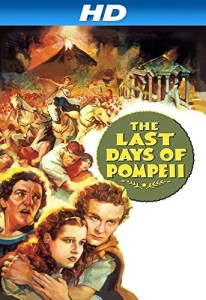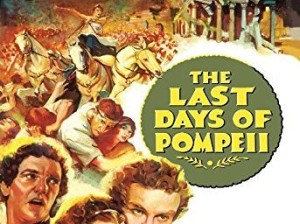The Last Days of Pompeii *** (1935, Preston Foster, Basil Rathbone, Alan Hale) – Classic Movie Review 2620
Directors Merian C Cooper and Ernest B Schoedsack’s 1935 movie turns out not to be a version of the credited Sir Edward Bulwer-Lytton novel but rather a tale of a gentle, peace-loving Pompeii blacksmith Marcus (Preston Foster).
He refuses lucrative offers to fight in the arena until his wife dies for lack of medical care, and then he becomes a corrupt gladiator, as he takes part in shady enterprises that make him the richest man in town.
Marcus then sets off for Judaea where his gentle adopted son Flavius (John Wood as a man, David Holt as a boy) is healed by Jesus, but he doesn’t help Christ when he is about to be crucified. Marcus gets to meet Pontius Pilate, who is the film’s hit turn in the person of Basil Rathbone. Then Marcus gets back home in time for a reasonably impressive eruption of nearby Vesuvius that threatens to doom their city.
The exotic but rather boringly handled human story drags down a film that is saved by some great gladiator spectacle and the King Kong-team’s remarkable Thirties special effects.
Despite all the spectacle, the movie was a box-office flop, costing $237,000 more than it grossed on its original release, and required several re-releases (on a double bill with King Kong (1933) to earn back its cost. It finally broke even with the earnings from a 1949 re-release, paired with She (1935).
Much of the music is taken from King Kong, as well as The Son of Kong (1933) and She (1935). It was filmed in black and white but a colorised version was made in 1990.
It was remade in Italy (Ultimi Giorni di Pompeii) in1960 as a vehicle for muscleman Steve Reeves, with script work by Sergio Leone.
© Derek Winnert 2015 Classic Movie Review 2620
Check out more reviews on http://derekwinnert.com






